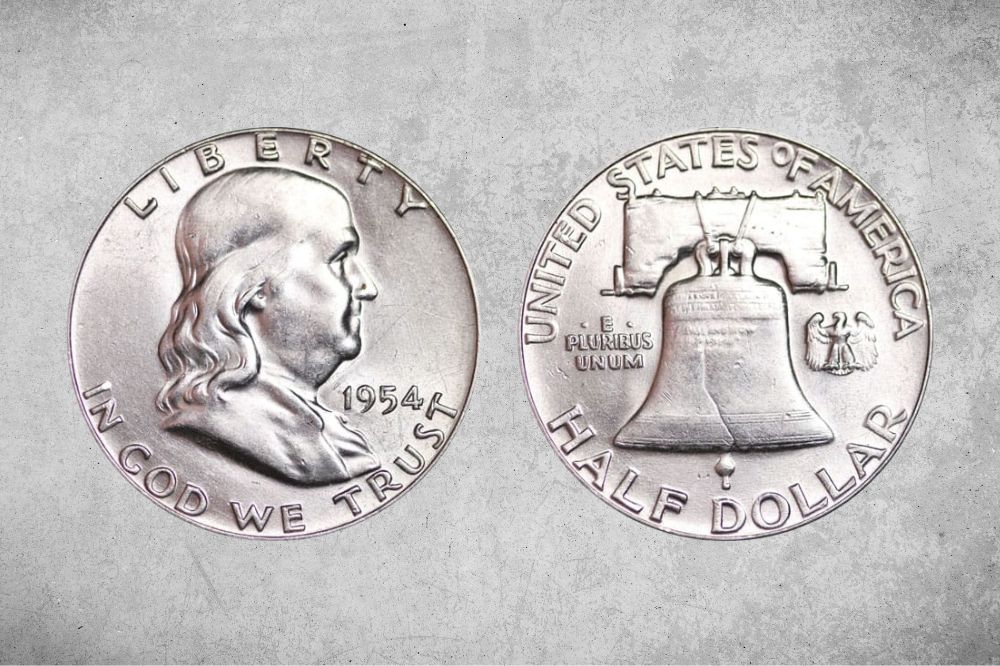It’s not every day that you see an old coin that is worth ten or even a hundred times its face value. But when it comes to the 1954 half dollar, it seems like the high price tag is always part of the deal.
Two main factors make the 1954 Franklin half dollar coins immensely valuable. First, they’re no longer in circulation, which means they’re harder to find. Next, they were made of silver—increasing their value by a lot.
So, how much is the true value of a 1954 half dollar today? What errors and rarities make the coins even more valuable?
Today, we’ll cover what makes the 1954 half dollar worth a lot more than just 50 cents. Read on to learn more!
1954 Half Dollar Value Details
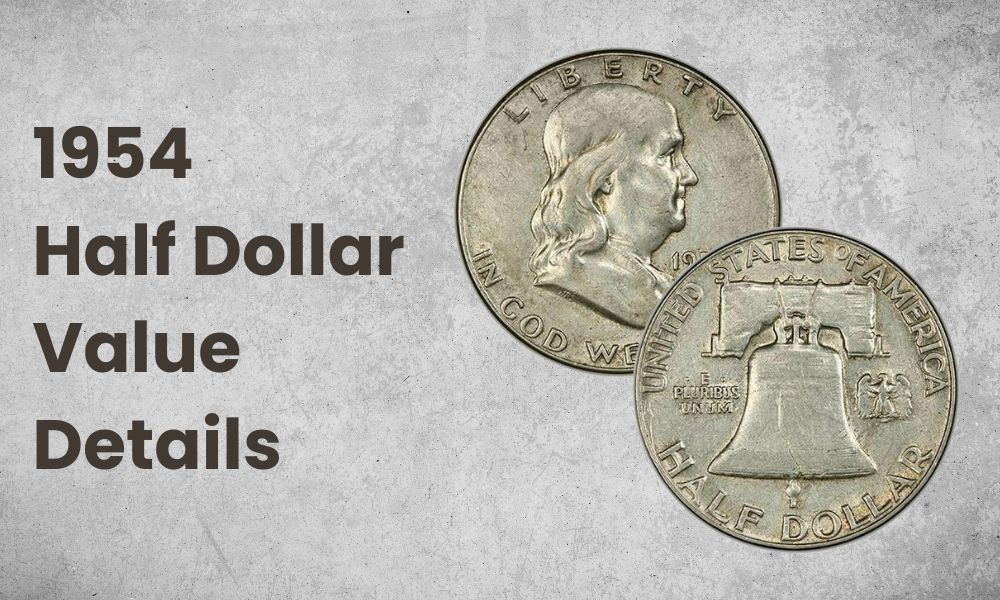
- Category: Franklin Half Dollars
- Mints: Philadelphia, Denver, and San Francisco
- Total mintage: 43,627,182
- Obverse designer: John R. Sinnock
- Reverse designer: John R. Sinnock
- Edge: Reeded
- Diameter: 30.6 mm
- Thickness: 1.8 mm
- Content: 90% silver, 10% copper
- Weight: 12.5 grams
John R. Sinnock’s design of the Franklin half dollar was quite straightforward. Its goal was to honor two of Philadelphia’s proudest historical icons—Founding Father Benjamin Franklin and the majestic Liberty Bell.
The obverse of the coin depicts the portrait of Ben Franklin facing right. It was said to have been modeled after a bust of Franklin made by sculptor Jean-Antoine Houdon.
Above the head of Franklin is the word “LIBERTY” in an arc formation. Below him, the words “IN GOD WE TRUST” are written. And in a very subtle manner, the designer’s initials “JRS” are scribbled in tiny text right under Franklin’s shoulder.
The reverse, on the other hand, depicts the monumental Liberty Bell in all its glory. In an arc formation going around the coin are the words “UNITED STATES OF AMERICA” and “HALF DOLLAR.”
On the left side of the bell, you’ll see the American creed “E pluribus unum,” and on the right, a small eagle with its wings spread.
The 1954 Franklin half dollar is made of 90% silver, which increases its value today immensely. The value of these coins today is directly tied to the worth of silver, so it’s nowhere near their half-dollar face value back in the 50s. Instead, it’s gone up and up throughout the years.
1954 Half Dollar Value Chart
| 1954 Half Dollar Value Chart | ||||||
| Mint Mark | Good | Extremely Fine | AU50 About Uncirculated | MS64 Choice Uncirculated | MS66 Gem Uncirculated | MS67 Superb Gem Uncirculated |
| 1954 Half Dollar Value for No Mint Mark (P) | $9 | $9.50 | $9.75 | $35
FBL: $50 |
$325
FBL: $775 |
FBL: $14,350 |
| 1954 Half Dollar Value for “D” Mint | $9 | $9.50 | $9.75 | $35
FBL: $50 |
$470
FBL: $700 |
$4,850
FBL: $12,350 |
| 1954 Half Dollar Value for “S” Mint | $9 | $9.50 | $9.75 | $38
FBL: $75 |
$215
FBL: $875 |
$2,100
FBL: $13,250 |
1954 Half Dollar Values and Varieties Guides
1954 Half Dollar Value for No Mint Mark (P)
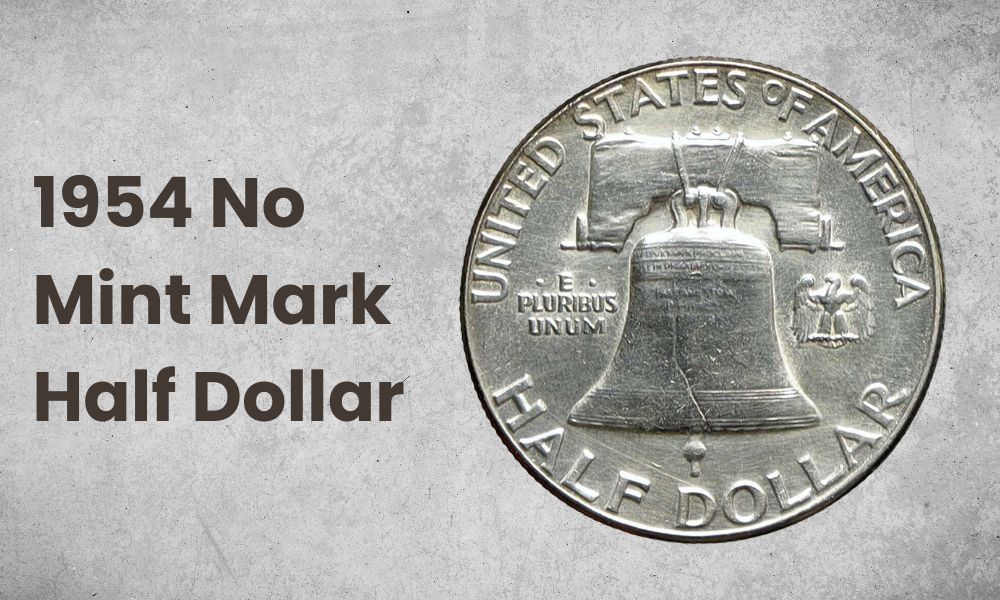
- Type: Franklin Half Dollars
- Edge: Reeded
- Mint mark: No mint mark (P)
- Place of minting: Philadelphia
- Year of minting: 1954
- Face value: $0.50
- $ price: $9 to $14,350
- Quantity produced: 13,188,202
- Designer: John R. Sinnock
After a low mintage in 1953, the Philadelphia mint picked back up on its production of the half dollar coin in 1954. Over 13 million Franklin half dollars were minted that year. Today, there are plenty of uncirculated issues of this coin going around among collectors all the way through grade MS66.
These half dollars made of silver are already quite valuable, so it’s no surprise that even in circulated, good condition, they’re worth 18 times their face value at $9 apiece.
However, this price doesn’t change much from circulated to about uncirculated coins. An AU50 coin is valued at $9.75, just under a dollar more expensive than a circulated one.
The crème dela crème of 1954 (P) half dollar coins lie, of course, in the uncirculated issues. An MS66 coin, for example, could sell for upwards of $300.
Another factor that can raise prices of the 1954 (P) half dollar is whether it qualifies for NGC’s Full Bell Lines designation, also known as MS FBL. When granted this designation, it means the coin has distinct lines on the lower part of the Liberty Bell on the reverse thanks to a full, clean strike.
An MS67 half dollar minted in Philly in 1954 with an FBL designation can sell today for about $14, 350.
1954 Half Dollar Value for “D” Mint Mark
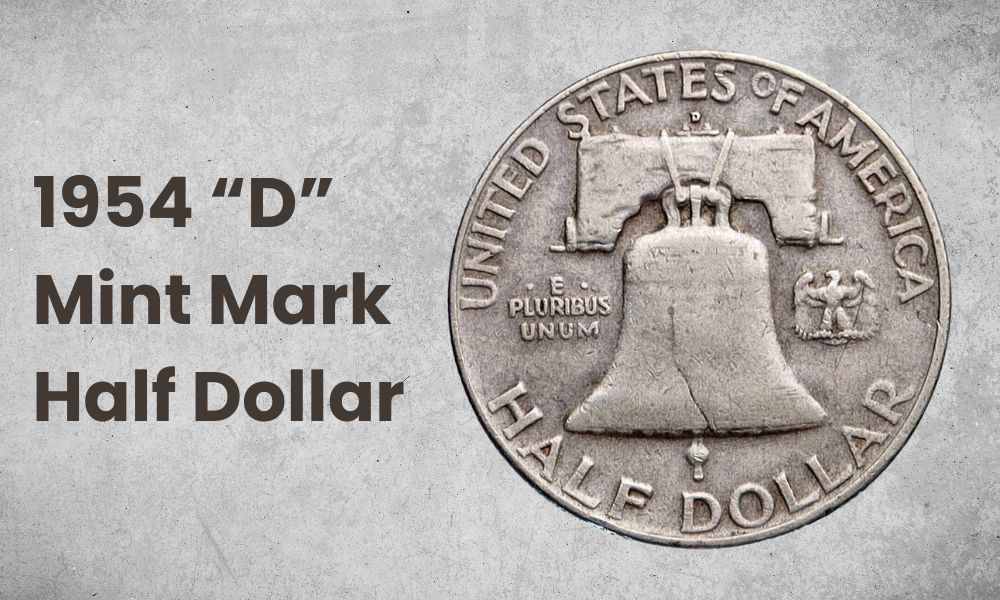
- Type: Franklin Half Dollars
- Edge: Reeded
- Mint mark: D
- Place of minting: Denver
- Year of minting: 1954
- Face value: $0.50
- $ price: $9 to $12,350
- Quantity produced: 25,445,580
- Designer: John R. Sinnock
In 1954, the Denver mint set the highest mintage record for the half dollar, producing over a quarter of a billion coins that year. Because of this, it’s quite a common coin. You’ll find many circulated and uncirculated issues of this coin among collectors.
The 1954 D half dollars are known to be struck much better than the coins produced in Philadelphia and San Francisco. They’re also not as scarce. That said, it’s still valued very highly.
Half dollars minted in Denver in 1954 are valued today from anywhere between $9 and $11 in circulated conditions. But that price gets much higher in uncirculated conditions. An MS67 uncirculated 1954 D half dollar can go up to $4,850 when sold.
Like the Philly-minted coins, the prices also increase when there are Full Bell Lines. For example, an MS66 half dollar is priced at $470. But with the FBL designation, the value increases to around $700.
1954 Half Dollar Value for “S” Mint Mark
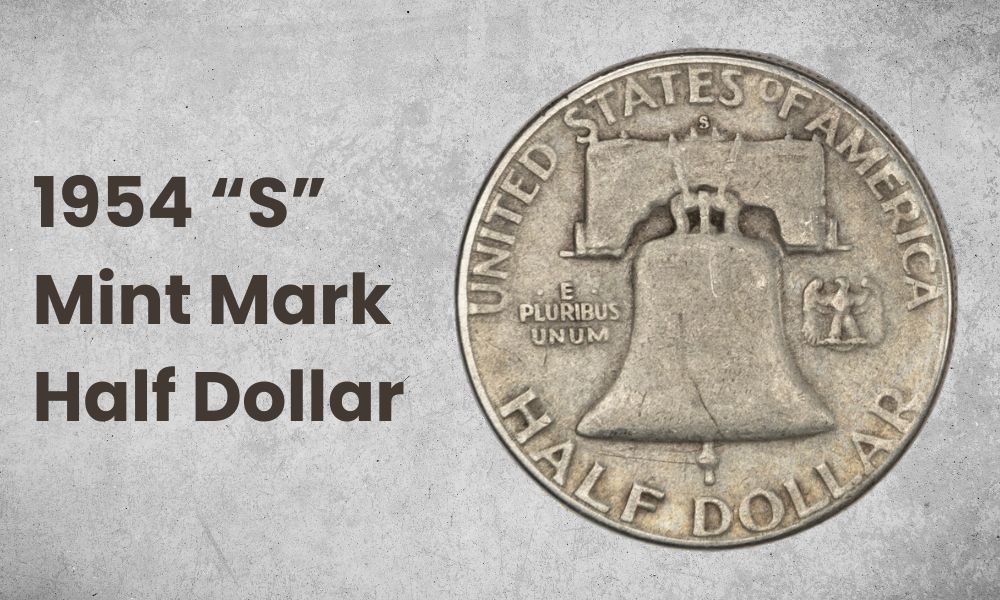
- Type: Franklin Half Dollars
- Edge: Reeded
- Mint mark: S
- Place of minting: San Francisco
- Year of minting: 1954
- Face value: $0.50
- $ price: $9 to $13,250
- Quantity produced: 4,993,400
- Designer: John R. Sinnock
1954 S half dollars isn’t as popular among collectors. Experts say that the only thing that might have made this coin attractive back in the 50s was the assumption that 1954 would be the final year the half dollar would be minted in Frisco.
Surprisingly, the value of this coin has become quite high. Today, the San Francisco half dollars of 1954 rivals and sometimes surpasses the values of Philly- and Denver-minted counterparts, especially in uncirculated mint state. This could be because it had the lowest mintage that year.
Like other half dollars minted this year, circulated coins are valued at around $9 to $11. Of course, with unique rarities and errors, the price goes up as well.
For example, while an MS62 1954 S half dollar is valued at $20, it can sell for five times its value if it has an error—like this half dollar that was auctioned off in 2014 for $101 for a “Bugs Bunny” error.
Finding a 1954 S half dollar with an FBL designation is incredibly rare, making it the most expensive of the three mint locations in many grades. An MS67 coin with Full Bell Lines will cost you $13,250 to buy today.
History of the 1954 Half Dollar
The Franklin dollar completed the US government’s project of changing all the depictions on US coinage from allegorical figures to real people.
It’s said that the Mint Director, Nellie Ross, had her eye on Ben Franklin as the figure on the half dollar as early as 1932. And in 1948, she got her chance to make it a reality with the first production of the Franklin half dollars designed by Chief Engraver Sinnock.
Although Benjamin Franklin was never president, he more than deserved the honor of being on the half dollar. He wasn’t just a Founding Father of the nation, but he was also an accomplished scientist, printer, inventor, and author.
Many people wanted Franklin to be put on the penny because of their association with his famous quote, “a penny saved is two pence clear.” But Director Ross believed that Franklin’s portrait was destined for bigger things—like the half dollar.
The Franklin half dollar series was the shortest minted series for the 50C coin in US history. It was first minted in 1948 but immediately stopped production in 1963 after the assassination of then-President John F. Kennedy, since a new design was produced to honor him instead.
1954 Half Dollar Grading
We already know that collectors place value on a coin depending on its condition and mint state. The less wear on the coin, the higher its grade and value. But Franklin half dollars in particular are also graded on how distinct the Liberty Bell’s lines look.
An FBL (Full Bell Lines) designation, as mentioned earlier, is given to a Franklin half dollar that has uninterrupted lines at the bottom of the Liberty Bell on the reverse of the coin.
Oftentimes, a poor strike can leave shallow, blurry lines on a coin. But in the case of properly struck coins, you’ll see clean, distinct lines across the bell. This increases the value of your 1954 Franklin half dollar significantly.
Want more information on how to grade these 1954 Franklin half dollar coins? Watch this video by CoinStudy:
1954 Half Dollar Errors
1. 1954 Half Dollar Struck on Dime Planchet Error
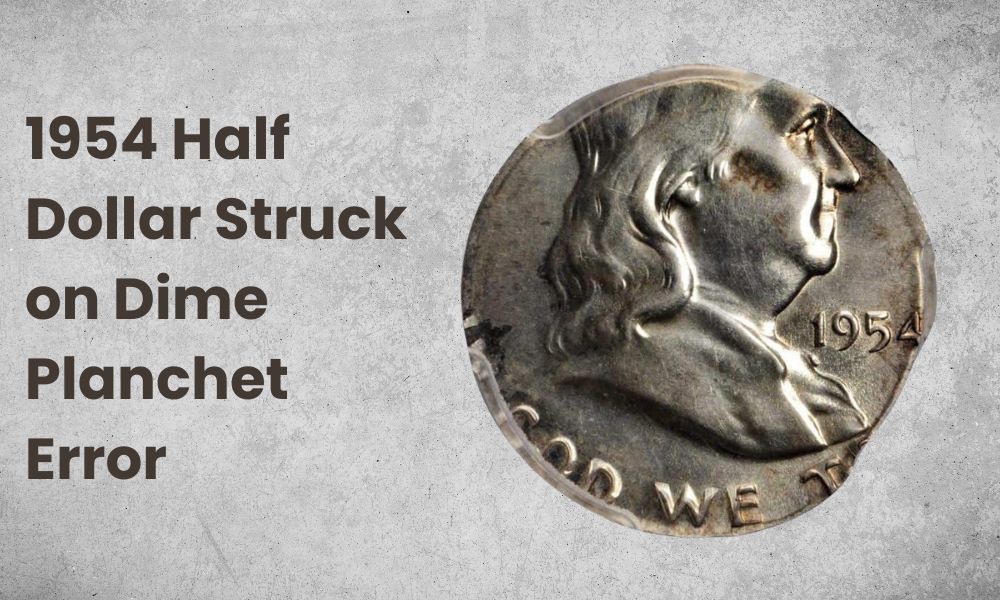
An MS62 1954 Franklin half dollar was found struck by mistake on a dime planchet. Not only was this coin attractive because of the peculiar metal error upon its mintage, but because it had a brilliant luster with small traces of golden-brown toning.
It’s well-struck, has glorious color and condition, and has a rare error, raising its value extraordinarily. This coin eventually sold for $5,875 at an auction.
2. 1954 Half Dollar “Bugs Bunny Teeth” Error
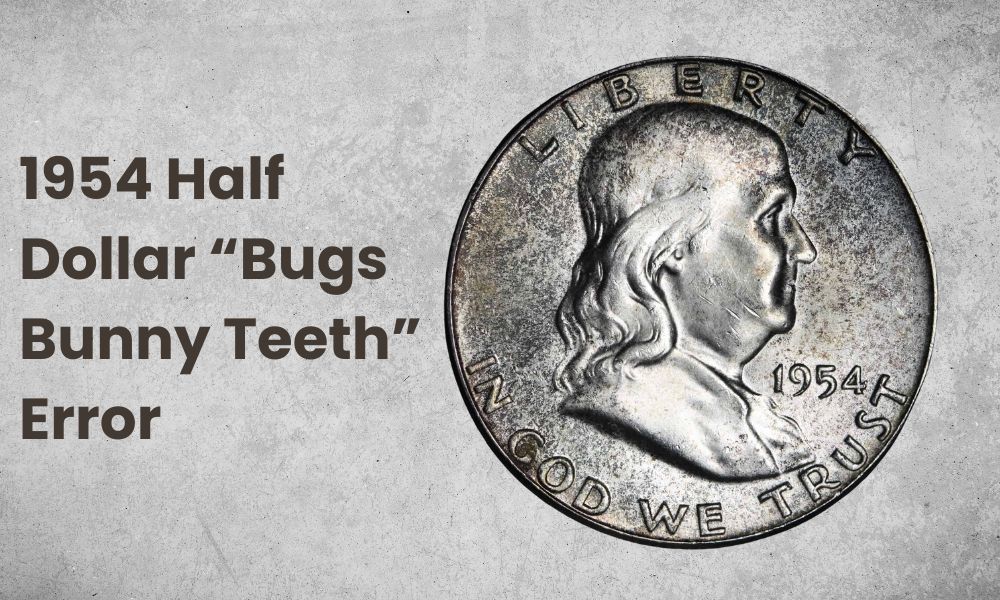
Perhaps the most peculiar and entertaining mint error in the 1954 issue of the half dollar is the “Bugs Bunny Teeth” strike error.
This error happens when a die clash appears near Franklin’s mouth. It occurs when there’s damage to the die when it hits the die of the reverse without a planchet. This strike makes it look like Franklin has fangs or buck teeth sticking out, hence the odd name for the error.
An MS65 1954 half dollar with this error has historically sold for around $90.
3. 1954 Half Dollar Struck on Quarter Planchet Error
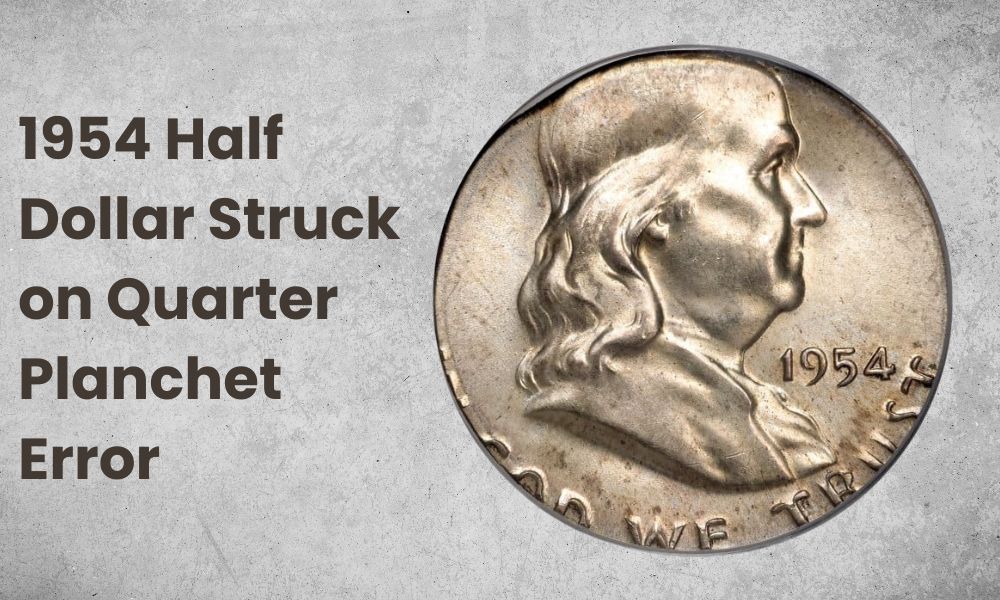
Another off-metal strike error for the 1954 half dollar is being struck on a quarter planchet. Because the quarter is smaller than the half dollar coin, you’ll see a lot of the letters around the coin cut off.
A coin with this error can sell for over $2,000, especially when the flaws are obvious and many of the design elements are cut off.
Check out other cool errors you’ll find in the 1954 issue of the Franklin half dollar through this video:
1954 Half Dollar FAQs
Where is the mint mark on a 1954 Ben Franklin Half Dollar?
You’ll find the mint mark of the 1954 half dollar coin on the reverse of the coin. It should be punched right above the Liberty Bell and just below the letter E in the word STATES, written in an arc on the upper area of the coin.
A “D” mint mark symbolizes mintage in Denver, while an “S” mint mark means it was produced in San Francisco. Note that Philadelphia-minted half dollars have no mint mark.
What is a 1954 half dollar made of?
The 1954 half dollar was struck on 90% silver, which is part of the reason why its value is higher than just 50 cents.
How can you tell if a half dollar is rare?
Like most coins, a half dollar coin is rare if it has mint errors, like an off-center strike, repunched mint mark, or off-metal mintage (like being struck on a planchet meant for a different coin). These errors can raise the price of a coin by hundreds or thousands of dollars.
You can also tell a half dollar is rare if it was made with 90% silver. If the coin was minted any time before 1965, it means it was made with 90% silver. From 1965 and beyond, the coin was only struck on 40% silver planchets, which made them less scarce and valuable.
What year half dollars are worth keeping?
Any half dollar minted before 1965 will have immense value because it was struck on 90% silver. If you’re looking at Franklin half dollars, any 50C coins from the years 1948 to 1963 will be a terrific addition to your collection. Key dates include the 1949, 1950, and 1954 issues.
